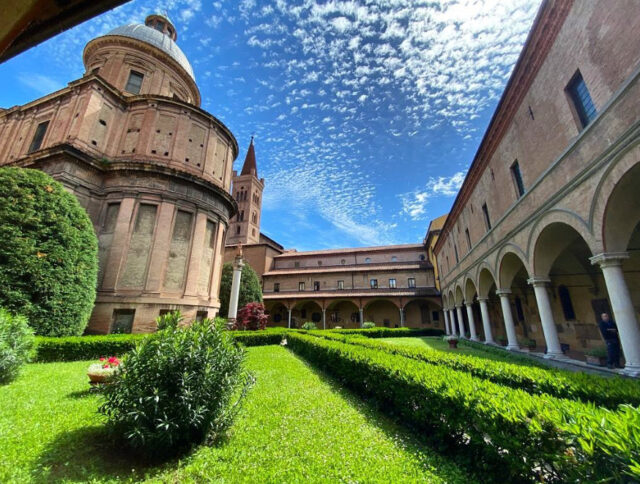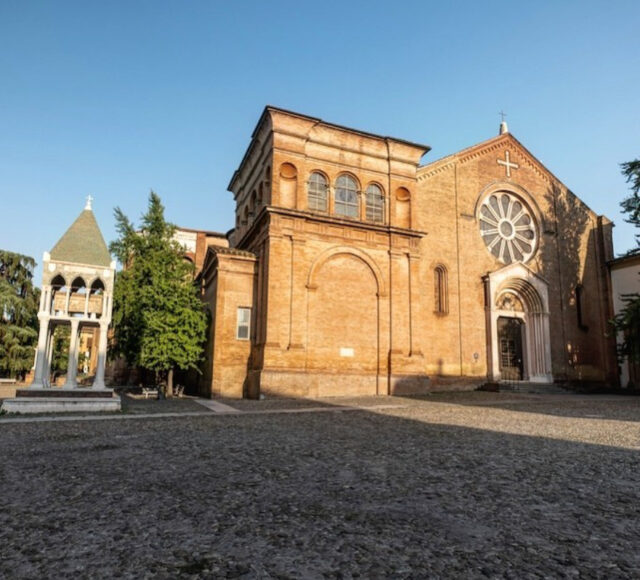Basilica di San Domenico
Basilica di San Domenico. The Basilica of San Domenico is one of the richest churches in Bologna in the history of art. Founding patriarch of the Preaching Friars (or Dominicans), the Spanish San Domenico di Guzman arrived in Bologna around 1200 where he acquired the church and rectory of San Nicolò delle Vigne, an area where the basilica dedicated to him now stands. After the death of the saint, which took place in 1221, it will be the same friars of his order who wanted to give life to a larger church in which to preserve his remains, still present today in the enchanting chapel of San Domenico inside a marble ark.
The splendid ark is today considered one of the purest creations of Italian plastic art, embellished by the sculptures of Nicola Pisano in the urn (1267), by Alfonso Lombardi in the predella (1532) and by GB Boudard in the frontal (1768) and surmounted by a splendid marble cymatium modeled in 1469-73 by Niccolò da Puglia known as “dell’Arca”.
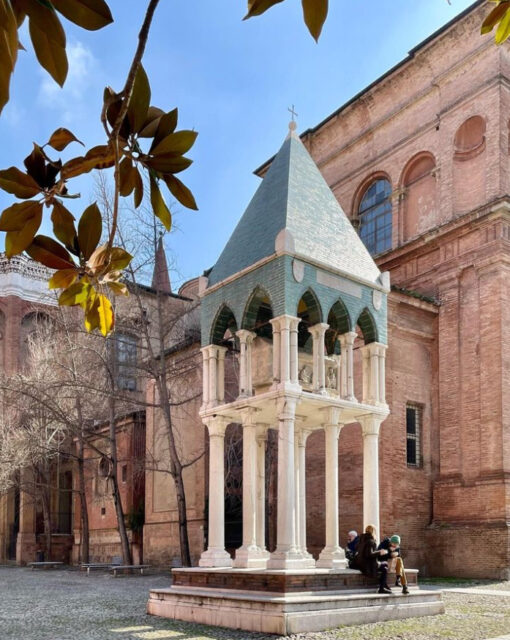
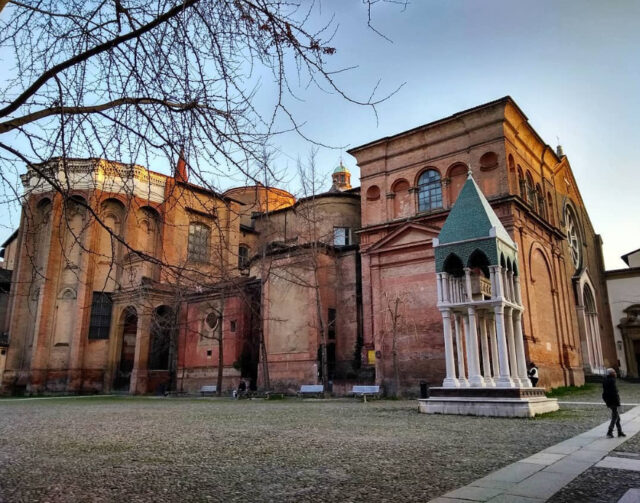
The basilica overlooks the square of San Domenico with a sober Romanesque front and is flanked by the Renaissance Ghisilardi chapel built to a design by Baldassarre Peruzzi. The interior was restructured between 1727 and 1732 by Carlo Francesco Dotti, who merged the two primitive medieval nuclei into a single organism of correct and luminous lines, and presents priceless works of art including paintings by Guercino (S. Tommaso ), by Luca Cambiaso (Nativity),
Also noteworthy are the angel holding the candelabrum by Michelangelo, the saints Petronius and Proculus (in the back), the dazzling pictorial decoration of the chapel (the Glorification of S. Domenico in the basin is by Guido Reni), the evocative cloisters of the convent and the cell of San Domenico. A masterpiece of Renaissance inlay is the wooden choir by Fra’ Damiano da Bergamo (1528-51), defined by contemporaries as the eighth wonder of the world and also admired by Emperor Charles V.
The following text is taken from One hundred years ago Bologna: corners and memories of the city in the Belluzzi photographic collection, Bologna, Costa, 2000.
In 1874 the facade of the church of San Domenico underwent the demolition of the two arms of the portico in the square: the one from the seventeenth century, leaning against the convent, and the front one, an eighteenth-century work by Carlo Francesco Dotti.
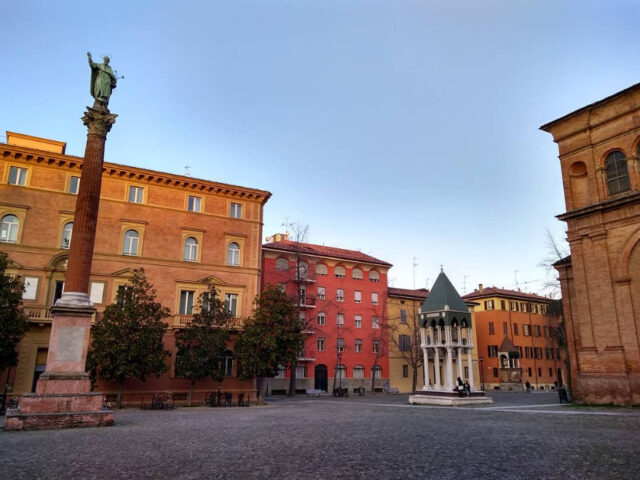
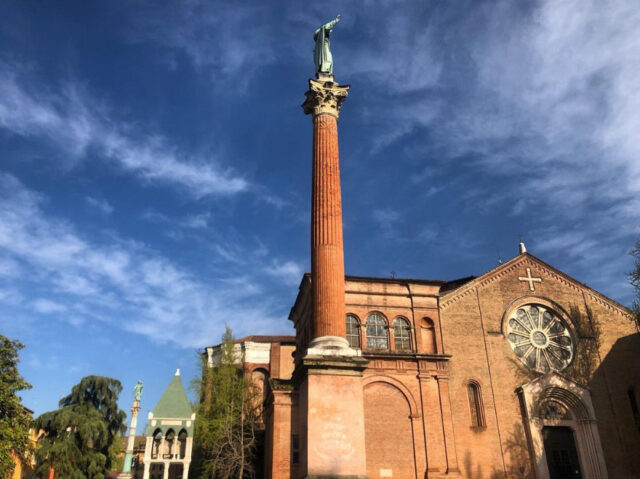
The fifteenth-century prothyrum was also involved in the demolition, a «Renaissance jewel […] that remained almost intact between the wings of Dotti’s portico» (A. D’Amato, 1996, p. 256). In those years the Dominican complex was located in an area affected by different and conflicting political pressures and economic interests.
On the one hand, in fact, in 1866 the religious community had been suppressed for the second time in the course of seventy years (the first had been in 1798), losing ownership of the many properties owned in the area, which passed to the municipal administration. The square itself – homonymous with the church that owed its name to the tomb of the saint preserved there – with a resolution of 3 December 1874 became Piazza Galileo, «with such an open polemical intention as to have Albicini, a man not inclined to “clerical” sympathies, write, that this change constituted “a calembour which, if nothing else, is childish” to be reserved “pour la bonne bouche” (M. Fanti, 2000, p. 330).
The square resumed its original name fifty years later, while the space currently in front of the Police Headquarters was named after Galileo. The proposal to demolish the statue of the saint, which dominates the area from the top of a column, was advanced by the municipal council on 30 January 1868 but was rejected by the majority.

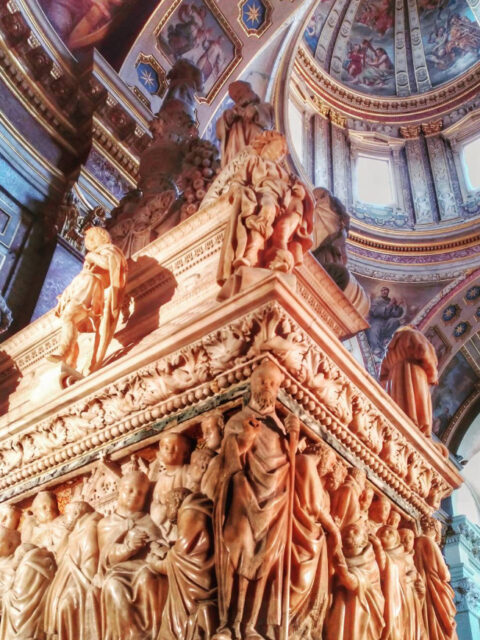
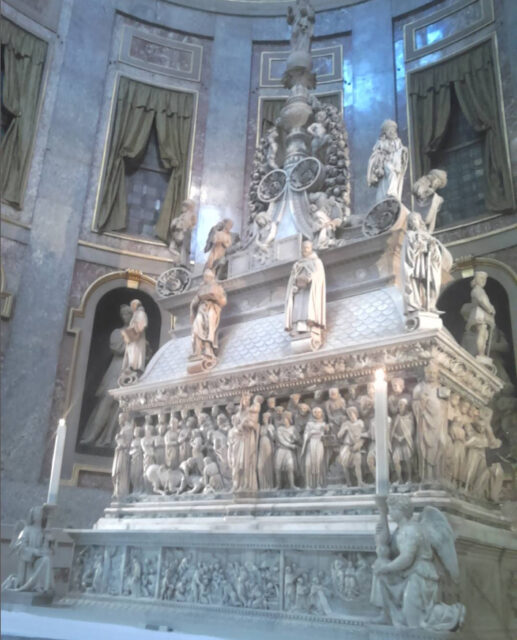
On the other hand, the area is located in the area affected by the first demolition works for the opening of via Farini, facing the square onto via Garibaldi, which connects piazza Cavour to palazzo Grabinski (today Palazzo di Giustizia), on the layout of the ancient via Egitto and via San Domenico. Named after the Risorgimento hero in 1867 on a proposal – approved unanimously – by the councilor Giuseppe Ceneri, the road is significant for how the Municipality proceeded in the urban renewal work under the pressure of needs and pressures different from those required for overall planning, risking sacrificing public good to private interests. In fact, the proposal to open a new street linking the city center to the palace of Count Enrico Grabinski, owner of many buildings in the area, was advanced as early as 1858 by the count himself, with the clear aim of re-evaluating its properties.
The ambition of enhancing that building with a major urban intervention had also been cherished by the previous owners – first Count Annibale Ranuzzi, then Prince Felice Baciocchi – who wanted to build a vast square in front, eventually incorporating Piazza San Domenico. During the 19th century, the grandiose project was scaled down, giving life to the more modest Piazza Baciocchi (1824-1826). Subsequently the new owner, Enrico Grabinski, an unscrupulous businessman and skilled speculator, managed to have the opening of an important connecting road, adjacent to his building, included among the “grandiose extraordinary works” of the 1960s.
Finally, in 1872, during the provisional exercise that followed the fall of the Progressive Giunta – called “blue” because mauve was Minghetti’s color – the Grabinski family ceded their building to the municipal administration, which would have placed the judicial offices there instead of in the former hospital della Morte (the building that now houses the Civic Archaeological Museum and the library of the Museum of the Risorgimento), as has been rumored for some time.
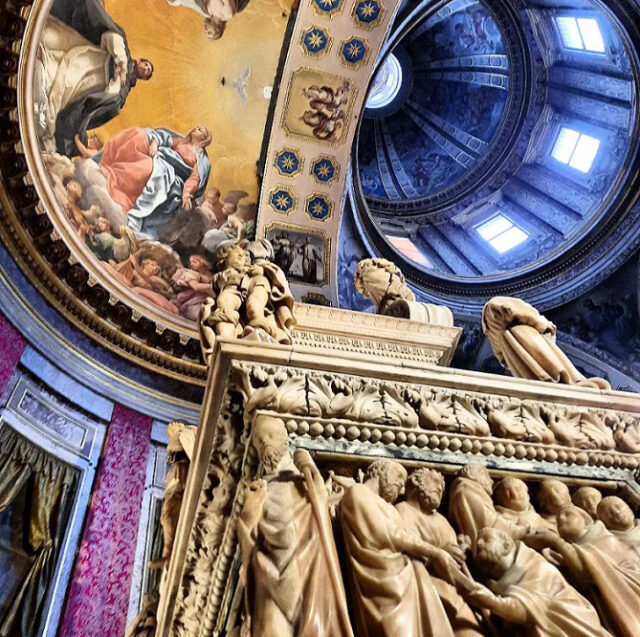
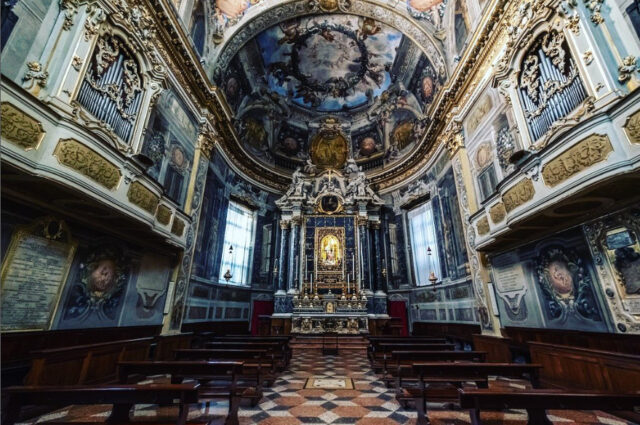
The amount obtained for the transaction was deemed so high as to induce Carlo Berti Pichat, acting mayor, to resign. that he would have placed the judicial offices there instead of in the former Hospital of Death (the building that now houses the Civic Archaeological Museum and the library of the Risorgimento Museum), as has been rumored for some time.
The amount obtained for the transaction was deemed so high as to induce Carlo Berti Pichat, acting mayor, to resign. that he would have placed the judicial offices there instead of in the former Hospital of Death (the building that now houses the Civic Archaeological Museum and the library of the Risorgimento Museum), as has been rumored for some time. The amount obtained for the transaction was deemed so high as to induce Carlo Berti Pichat, acting mayor, to resign.
At the end of the 19th century, relations between the Municipality and the Dominicans relaxed, so much so that the community, despite not legally existing, obtained the concession to use the church and annexed premises. In exchange, the administration demanded the restoration of the façade, which had already been studied by Raffaele Faccioli in 1894 on behalf of the regional office for the conservation of monuments in Emilia. That old project was taken up again, in 1909-1910, by Alfonso Rubbiani – in charge of the restoration by the Committee for historical-artistic Bologna – who would have brought the facade to its current state, imitating its original appearance.
